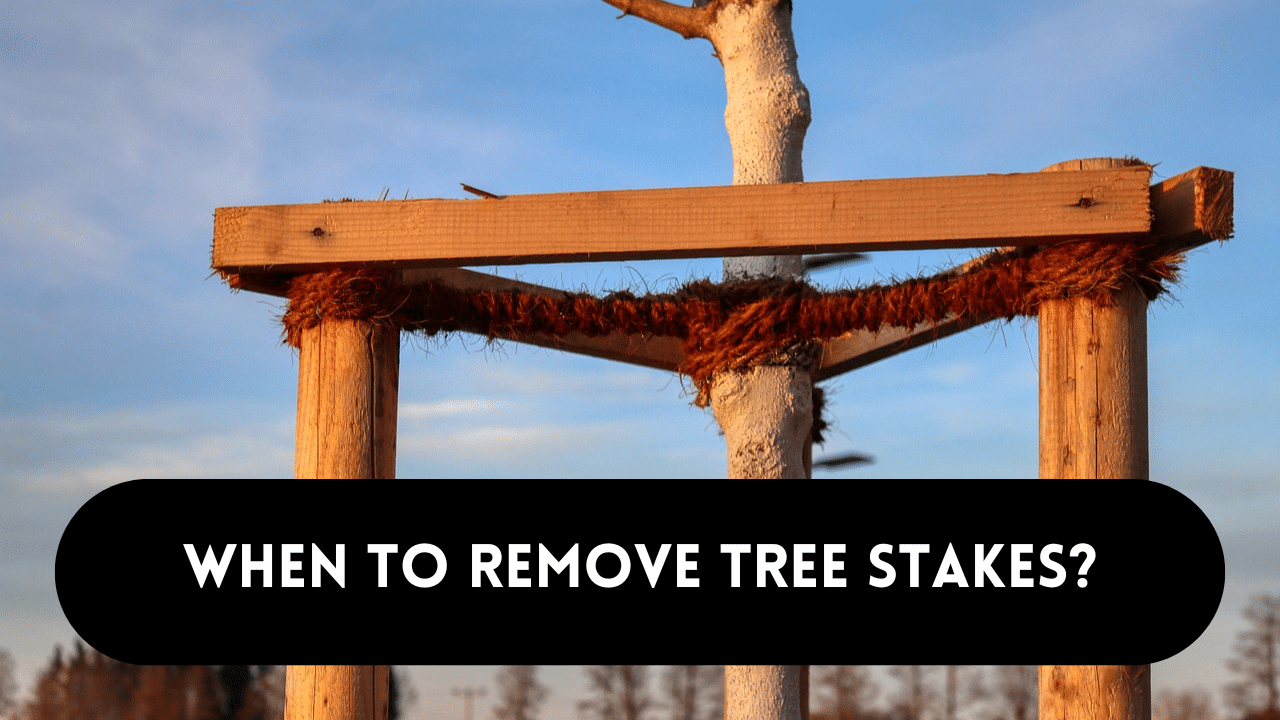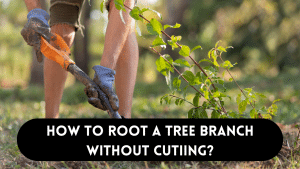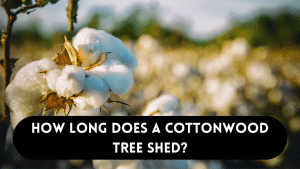Ever ponder when to remove tree stakes out? The magnificent trees that adorn our landscapes frequently require assistance while they are young. Support from stakes helps plants grow robust and tall. However, just like training wheels on a bike, their use is temporary. Now, let’s embark on the adventure of determining when and how to remove tree stakes.
Recognising when To Remove Tree Stakes
Let’s examine why we stake trees in the first place before delving into when to remove tree stakes. Strong gusts or heavy rains may make it difficult for young trees, especially those that have just been planted, to remain upright.
It would be like putting a toddler into a hurricane without an umbrella to attempt and develop roots in a tumultuous environment. Tree stakes are useful in situations like that. They offer the essential assistance till the tree is able to firmly affix itself to the ground.
The Value to Remove Tree Stakes
Tree pegs are an essential source of support for young trees, but if they are left in place for an extended period of time, they may prevent the tree from growing naturally. It’s similar to a parent who, even after their child has mastered solo riding, still hangs on to their bicycle. The tree must eventually learn how to stand tall by itself.
Indications that Tree Stake Removal Is Needed
Promoting the proper growth and development of young trees requires an awareness of the telltale indicators that point to the need to remove tree pegs.The relationship between these indicators and the search term “when to remove tree stakes” is explained in full below:
Tree Firmness: The stability of the tree is one of the most important indicators to check for. A tree is said to have reached self-sufficiency strength if it can stand straight without relying on the stakes and sways very little in the wind. This stability suggests that the stakes may no longer be necessary for the tree, indicating that it might be appropriate to remove them.
Trunk Strength: Another important factor is evaluating the tree’s trunk strength. A tree with a strong trunk has developed an interior structure that can withstand its weight. A tree is mature enough to stand on its own without the assistance of pegs when its trunk feels robust and sturdy.
Root Development: A tree’s stability and anchoring depend heavily on its capacity to generate healthy roots. The tree receives vital support and stability from its roots as they spread out and get established in the ground. If you see a lot of root growth, the tree is more securely rooted and less dependent on outside supports like stakes.
Minor Wind Damage: The tree may resist environmental stresses without the use of stakes if it shows minor damage from wind or other external factors. To remove tree stakes is appropriate for trees that wobble too much or get damaged in windy conditions, but trees that survive reasonably intact show that they are ready.
Seasonal Considerations: There are seasonal elements that can also affect when to remove tree stakes. Lowering the danger of stress and damage during the transition by removing stakes while the tree is not actively growing—during the dormant season. This makes the process of removing the tree easier and more successful by allowing it to gradually get used to standing on its own.
You may facilitate the healthy growth and development of your trees by identifying these indicators and taking into account variables like root growth, wind damage, trunk strength, tree stability, and seasonal influences when determining the best time to remove tree pegs.
How to Remove Tree Stakes
When you decide it’s time to say goodbye to the stakes, to remove tree stakes, is not too difficult:
Examine the Tree
Make sure the tree is ready to stand on its own by giving it one last inspection before you remove tree stakes.
Cut the ties
Remove the connections holding the tree to the stakes with caution. Use caution so as not to harm the branches or bark of the tree.
Take Out the Stakes
After the ties are released, carefully lift the stakes out of the earth. To remove them from the ground, you might need to use a shovel or mallet, depending on how they were installed.
Observe the Tree
In the coming weeks, pay special attention to the tree to make sure it stays stable once the stakes are taken out. From time to time, trees may require extra assistance during bad weather until they become entirely accustomed to standing alone.

Advice to Remove Tree Stakes
For the stability and well-being of your young trees, time and skill are essential when it comes to tree stake removal. This is a thorough description of how these pointers relate to the keyword “when to remove tree stakes” :
Determine Tree Stability of Tree Stakes
Determine the stability of the tree before thinking about removing the stakes. The tree might be ready to have its stakes removed if it can stand steadily without swaying too much. Based on the tree’s development, this evaluation aids in choosing the right time.
Examine Trunk Strength
In order for a tree to stand on its own, it must have strong trunk development. Consider the strength of the tree’s trunk when determining when to remove tree stakes. It can mean that the stakes can be taken out shortly if it feels strong and able to hold the weight of the tree.
Keep an eye on Root Growth
Robust root development indicates that the tree is firmly taking root in the ground.
Trees become less dependent on stakes for support as their roots grow and anchor the tree. When a tree is ready to have its stakes removed, it can be determined by tracking the growth of its roots.
Think About Seasonal Aspects
Seasonal considerations also affect when to remove tree stakes. Since the tree is not actively developing during the dormant season, it is normally advised to remove the stakes. This decreases stress on the tree and lessens the danger of injury during stake removal.
Gradual Tree Stakes Removal Process
If you’re not sure if a tree will remain stable after you remove its stakes, proceed gradually. Start by cutting the stakes that offer the least amount of support and relaxing the ties. After taking out the remaining stakes, observe the tree’s reaction to make sure the transition to standing on its own is seamless.
You may decide when it’s best to remove tree stakes while encouraging healthy tree growth by using these suggestions, taking into account the stability of the tree, its trunk strength, its root growth, seasonal conditions, and implementing a progressive removal procedure.
FAQs
How long are tree stakes supposed to be left in place?
For the first year or two following planting, tree stakes should normally be left in place. However, the length of time could change based on the kind of tree and the surrounding circumstances.
What is the consequence of leaving tree stakes in place too long?
Trees may not develop naturally if tree stakes are left in place for an extended period of time. Weak trunk growth, restricted root expansion, and a higher chance of illness or pest infestation are possible outcomes.
Is it possible to remove tree stakes while the plants are growing?
Tree stakes should ideally be removed in the dormant season, but if need be, you can remove them throughout the growing season. Just be sure to keep a watchful eye out for any indications of instability once the tree has been removed.
Will the tree suffer harm if the stakes are removed?
If done properly, taking down tree stakes shouldn’t harm the tree. But, in order to protect the tree’s bark and roots, extreme caution must be used when removing the object.
Is it best to remove every tree stake at once?
To give the tree time to get used to standing on its own, it’s usually preferable to remove all of the tree stakes at once.If you’re unsure, you can eliminate the stakes one at a time, beginning with the ones that aren’t as necessary for support.
Conclusion
For young trees to grow healthily, it’s crucial to know when to remove tree pegs. If left in place for an extended period of time, they might obstruct the tree’s natural development even though they offer vital support during the early stages of growth. You may support your trees’ growth and well-being in their native habitat by being aware of the warning signs and adhering to a cautious removal procedure.
Thus, watch those young trees, and when the time is appropriate, say goodbye to those handy tree stakes, knowing that you have contributed to the development of yet another magnificent member of the forest community.




